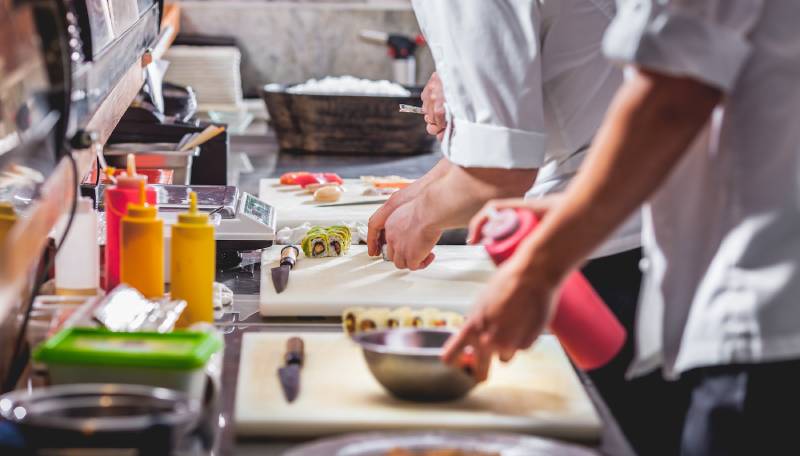Takeaway food services is one of the few areas that actually did well in the midst of Coronavirus, especially during lockdowns when restaurants and cafes were forced to closed. Many existing businesses started offering up takeaway food where it wasn’t something they’d even considered before.
Since the increase in demand for takeaway meals, we have started to see dark kitchens pop up. These are basically where kitchens are set up that do not have serving areas, so they ONLY offer takeaway options to their customers. They are set up specifically to deal with delivery services, either via the restaurants themselves of through the ever increasingly popular apps.
How do Dark Kitchens Work?
In some cases these dark kitchens share space, cutting down on costs further and enabling delivery companies to collect food from more than one restaurant at a time from the same location. Again, cutting down on costs and enabling a faster delivery to customers at the other end.
They tend to appear in the outskirts of city areas, where property is cheaper to rent or buy. Although they make up just a small part of the industry, it’s an area that we will likely see grow as the trend for home delivery takeaway food continues at current levels of demand.
These dark kitchens also have a positive effect on the environment, reducing energy consumption from these companies in terms of heat and light as well as a reduction in fuel for delivery companies and therefore a reduction in CO2 gases emitted into the environment. It sounds like a win-win for both restaurant and delivery firms.
Benefits to the Takeaway Food Business
The other benefit is that by having dark kitchens located in the outskirts of cities and towns, it will draw less traffic into the already busy streets of said cities and town. This will make parking and travel easier for employee’s getting to work as well as the delivery companies when dropping off takeaway meals at their customers locations.
Companies will also have the option of sharing bathroom facilities, takeaway packaging and stock of all kinds of items that are used for all of the businesses located in these dark kitchen areas. It could be especially beneficial to smaller independent takeaways that don’t have the funds to hold big stocks. Who knows, we might see further collaboration for these companies in ordering ingredients in bulk and helping their businesses streamline and be able to compete with some of the larger chain restaurants.
It seems like a simple solution, but a positive one at that! It will be interesting to see how this develops over the coming months and years. It may be in the not too distant future we could see this being the norm.
